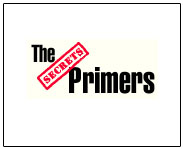 There are a handful of special design speakers which don’t use cones. Instead, they have thin foils suspended between magnets or metal sheets. With a ribbon speaker, the musical signal is applied to a foil ribbon, and the varying electrical charge placed upon it by the music causes it to be attracted or repelled by the magnets,
There are a handful of special design speakers which don’t use cones. Instead, they have thin foils suspended between magnets or metal sheets. With a ribbon speaker, the musical signal is applied to a foil ribbon, and the varying electrical charge placed upon it by the music causes it to be attracted or repelled by the magnets,  moving air in doing so, and thus reproducing the sound. A variation on this consists of a foil attached to a large flat membrane, and it is the membrane which is suspended. Such designs are called planar-magnetic (example shown on right). Electrostatic speakers (example shown on left), by comparison, have a plastic membrane, coated with something like powdered graphite, suspended between two perforated metal sheets. A positive voltage (several thousand volts) is connected to the membrane, and the musical signal, the voltage of which is increased by a transformer in the base of the speaker, is applied to the perforated sheets. The varying signal in the metal sheets attracts or repels the membrane, and the music is reproduced. These ribbon and electrostatic speakers reproduce midrange and upper frequencies with superb clarity, but are not very good at the low frequencies (below 100Hz) because of the lack of an enclosure to prevent the rear waves from canceling the front waves where the sound gets omni directional. Exceptions are VERY LARGE panels, where the diaphragm itself provides a baffle to separate the front and rear bass waves. Therefore, they usually have standard cone type speakers in a separate cabinet at the base (see photos) to serve as woofers, using a hybrid design. Ribbon speakers, planar magnetic speakers, and electrostatic speakers are dipolar in nature.
moving air in doing so, and thus reproducing the sound. A variation on this consists of a foil attached to a large flat membrane, and it is the membrane which is suspended. Such designs are called planar-magnetic (example shown on right). Electrostatic speakers (example shown on left), by comparison, have a plastic membrane, coated with something like powdered graphite, suspended between two perforated metal sheets. A positive voltage (several thousand volts) is connected to the membrane, and the musical signal, the voltage of which is increased by a transformer in the base of the speaker, is applied to the perforated sheets. The varying signal in the metal sheets attracts or repels the membrane, and the music is reproduced. These ribbon and electrostatic speakers reproduce midrange and upper frequencies with superb clarity, but are not very good at the low frequencies (below 100Hz) because of the lack of an enclosure to prevent the rear waves from canceling the front waves where the sound gets omni directional. Exceptions are VERY LARGE panels, where the diaphragm itself provides a baffle to separate the front and rear bass waves. Therefore, they usually have standard cone type speakers in a separate cabinet at the base (see photos) to serve as woofers, using a hybrid design. Ribbon speakers, planar magnetic speakers, and electrostatic speakers are dipolar in nature.


